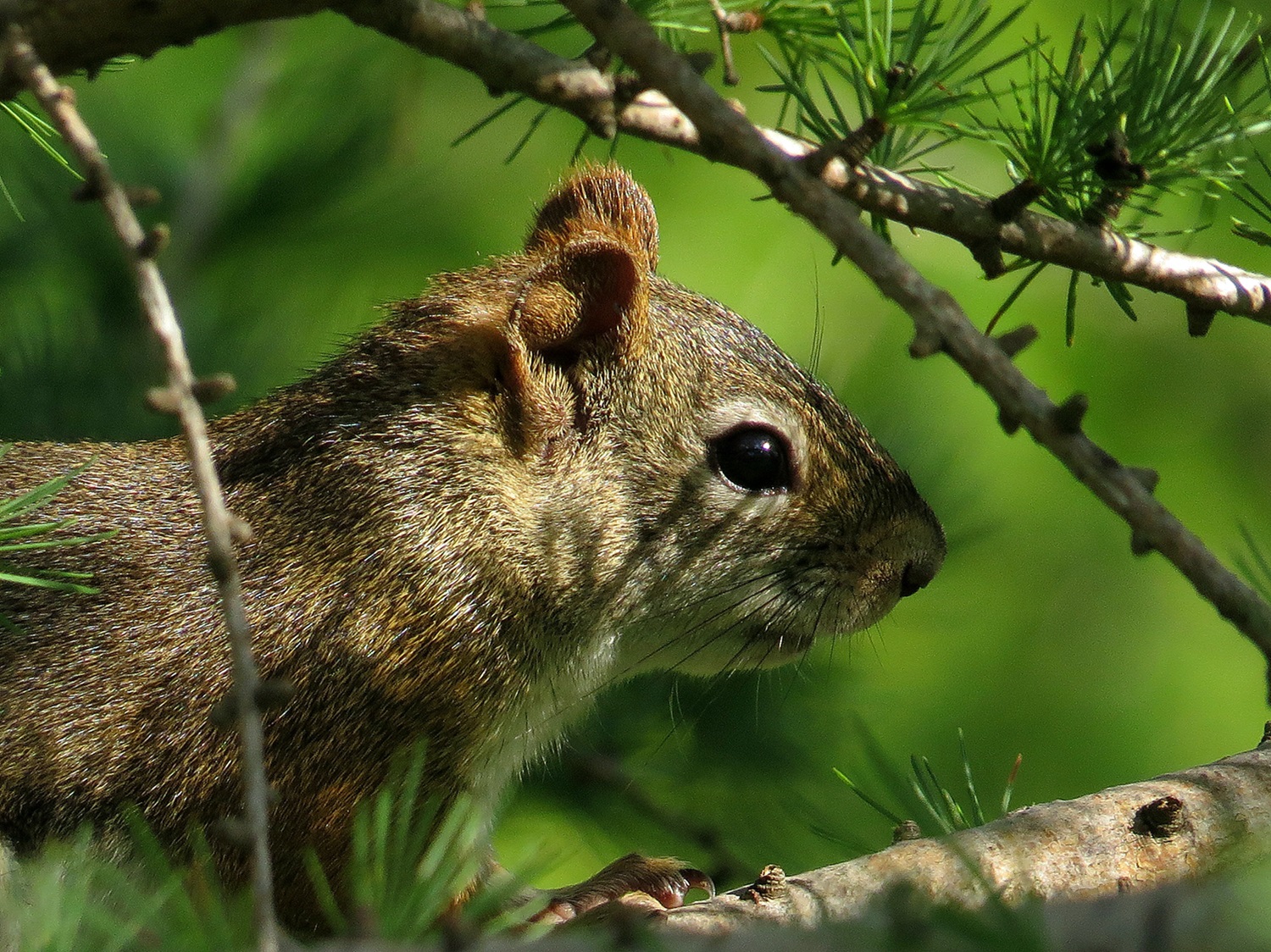Bats are nocturnal mammals of the order Chiroptera (literally "hand wing"). Bats are the only flying mammals. Most bats in Canada are plain-nosed (family Vespertilionidae). There are 17 Canadian species which range in size from the eastern small-footed bat (Myotis leibii), which weighs four grams and has a wingspan of 21 centimetres, to the hoary bat (Lasiurus cinereus), which weighs 30 grams and has a wingspan of 40 centimetres. The most common bat in Canada, the little brown bat (Myotis lucifugus), weighs about nine grams and has a wingspan of 22-27 centimetres. Two other species have been recorded in Canada as well: the evening bat (Nycticeius humeralis) and the big free-tailed bat (Nyctinomops macrotis).
Reproduction and Development
Bats reproduce slowly, typically bearing one to two young per year (three to four is possible but rare). Most Canadian species mate in autumn and females store sperm in the uterus over winter. Ovulation and fertilization occur in spring when bats leave hibernation, and young are born about 60 days later, usually in mid June. Newborn bats weigh about 25% of their mothers' mass and grow very quickly. Young bats consume only their mothers' milk until they are large enough to fly and hunt insects. Young little brown bats, for example, may fly by the age of three weeks. Bats are long-lived mammals: the oldest bat recorded in Canada was over 30 when last seen in the wild.
Distribution and Habitat
Bats live across Canada from Newfoundland and Labrador to Haida Gwaii and from the US border to the treeline. In summer, most roost in hollows and crevices in and around cliffs or buildings, while some roost in foliage. In winter, Canadian bats hibernate or migrate to warmer areas. Some Canadian bats migrate several hundred kilometres between summer and winter roosts. Bats that hibernate use underground sites, caves or old mines; only big brown bats (Eptesicus fuscus) regularly hibernate in buildings.
Diet
Active bats can eat over 50% of their body weight every day, while lactating females may consume over 100% of their body weight, reflecting the cost of producing milk. Canadian species of bats usually feed on insects. In the tropics and subtropics there are many more species of bat, some of which eat fruit, leaves, nectar and pollen, other animals (even bats) and blood. The three species of blood feeders (vampires) occur in South and Central America.
Echolocation

Bats have eyes and can see, but most use echolocation to detect obstacles and prey. In echolocation, animals emit calls and then listen for echoes; they use the differences between call and echo to collect information about their surroundings. Like most bats, species in Canada produce their echolocation calls in their voice boxes. These calls can be very intense (~130 decibels), allowing bats to detect insect prey at distances of around 20 metres. Little brown bats produce calls at rates of from 50 to 500 per second, while hoary bats produce calls at rates of 5 to 300 per second. Cruising bats emit calls at a relatively low rate when looking for prey or objects, but increase the number of calls per second when chasing prey. Although most bats use high-frequency calls which are above the range of human hearing (ultrasonic), some bats use lower-frequency calls that are audible to humans. In Canada, people can hear the echolocation calls of spotted bats (Euderma maculatum), which can be found in British Columbia, while some children can hear the calls of hoary bats. Many insects, such as moths and crickets, have ears that are sensitive to these echolocation calls, alerting them to the threat of bats.

 Share on Facebook
Share on Facebook Share on X
Share on X Share by Email
Share by Email Share on Google Classroom
Share on Google Classroom





